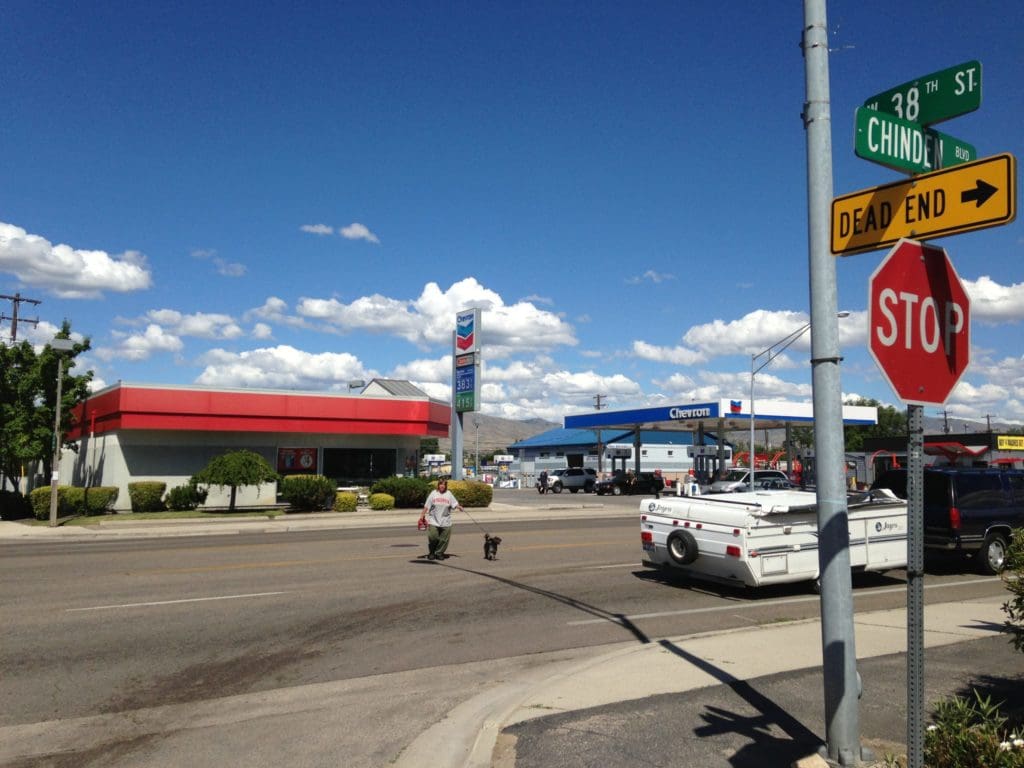Don Kostelec, AICP, is a 17-year professional in active transportation planning, health analysis and comprehensive planning. In this guest blog, Don shares his experience with how the notorious Manual of Uniform Traffic Control Devices (MUTCD) affects pedestrian safety and specifically, vulnerable and food insecure community members in his city.
Convenience stores are often a vital source for food for low income neighborhoods that are far-removed from regular grocery stores. The Jacksons Store at the corner of US 20-26 (Chinden Boulevard) and 38th Street in Garden City, Idaho is one such location.
Garden City has the most economically-challenged population in the Boise region and Ada County. And Garden City has pedestrian fatality rates that are twice as high as Ada County as a whole.
Residents of this area along Chinden rely on a local convenience store as a food outlet – but it’s across a dangerous arterial. US 20-26 is a five-lane arterial that bisects Garden City to serve commuters in suburbs to the west. It is a half-mile or more in either direction for a pedestrian to reach a signalized intersection that includes a mark crosswalk. In watching numerous neighborhood residents attempt to cross Chinden at 38th, we requested an analysis from the Ada County Highway District and Idaho Transportation Department on putting in a signal.

The agencies applied the MUTCD “warrant” of needing 20 pedestrians to risk their lives in an hour in order to justify the signal. The final count they came up with was 18 pedestrians. Another 5 people from this same neighborhood were seen driving across this intersection to access the store. Those 5 people could have chosen to walk had there been a signal here, but these highway agencies refused to count those trips as likely pedestrian trips. The signal was denied.
People remain in peril trying to cross this location just to access a food outlet, or have to walk nearly a half an hour out of their way to utilize a protected crossing. It begs the question – would we make motorists go this far out of their way? Just to cross a street? Of course not. But because of the strict adherence to the MUTCD we are denying some of the most economically challenged areas of the Boise region safe access to food and recreation. That’s how the MUTCD is killing the people of this country.
Want to Take Action On This?
- The MUTCD is currently being revised by the U.S. Department of Transportation. Unfortunately, the version they came up with is barely an improvement. But we will have a chance to make it better. Click here to use our simple template to send in your comment.
- If you have a story about how the Manual of Uniform Traffic Control Devices inhibited your efforts to create people-first community change, please click here to submit it for a possible feature.